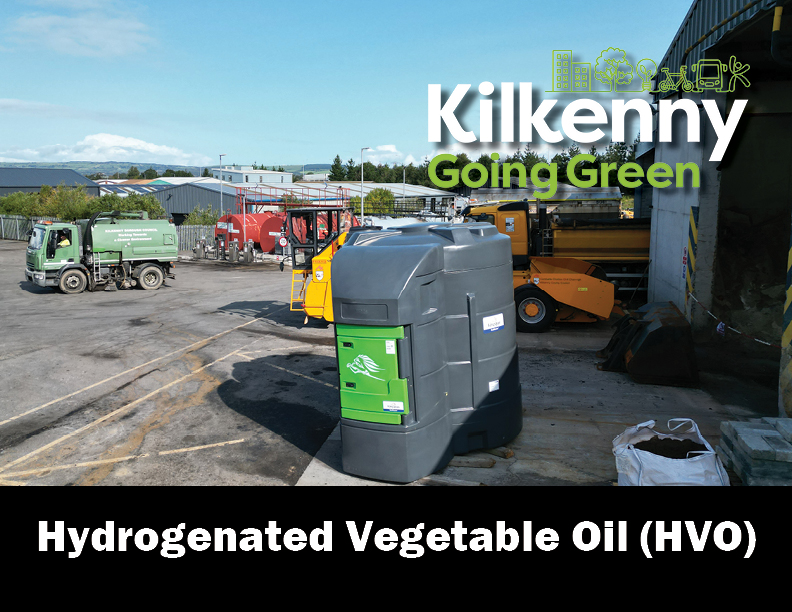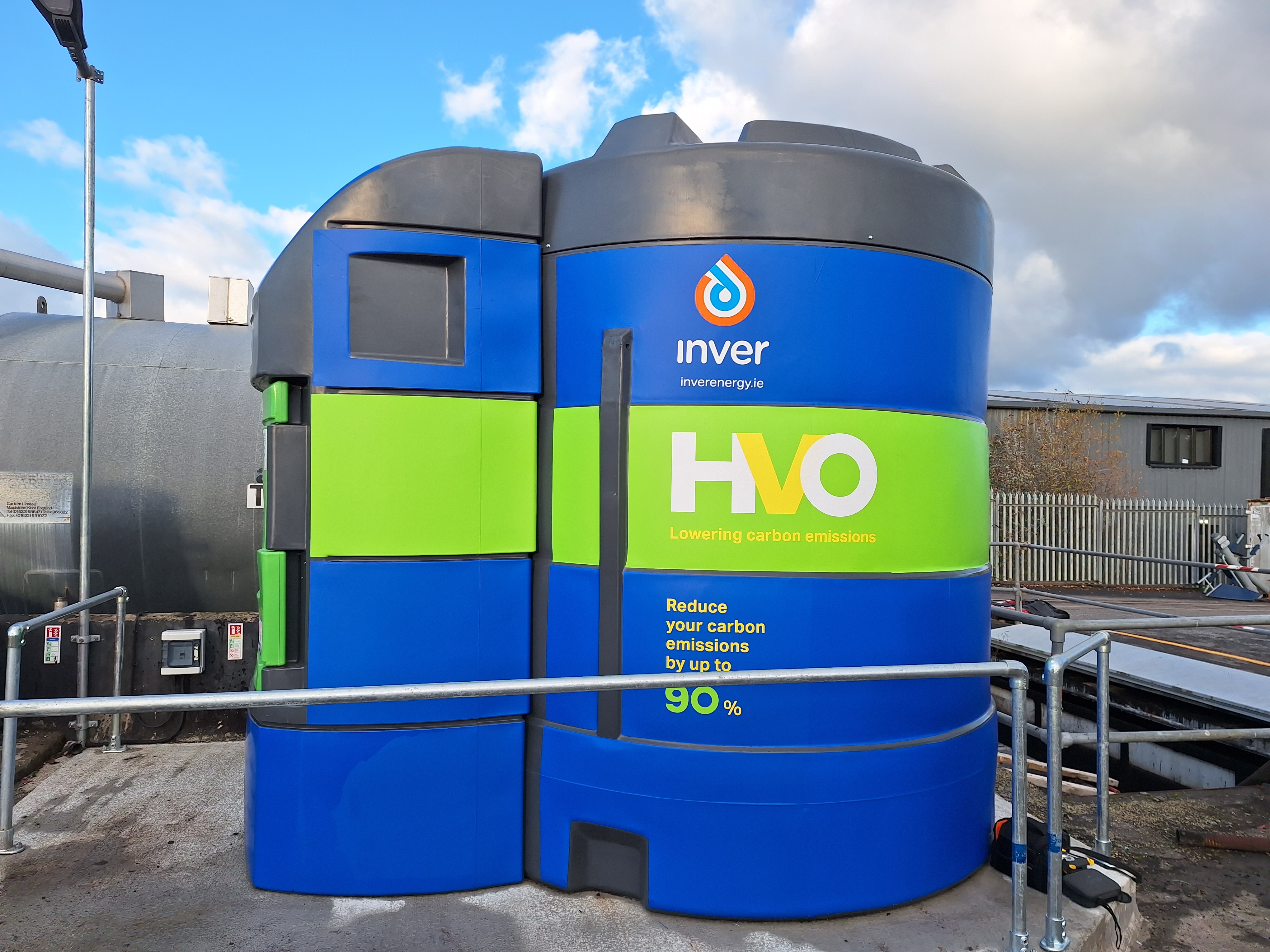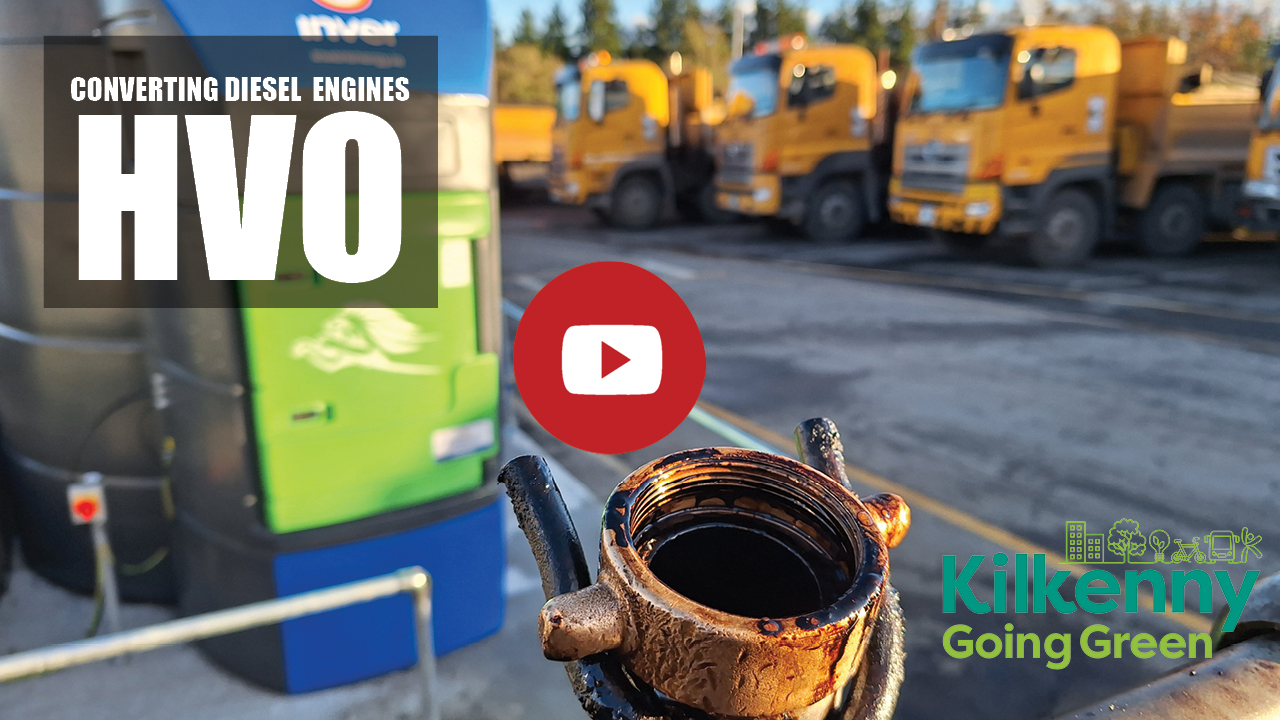Hydrotreated Vegetable Oil (HVO) use in Kilkenny Co Co vehicles
Kilkenny County Council trials the use of Hydrotreated Vegetable Oil (HVO) in some of the Council's vehicles.
The video below gives an overview of HVO use in some of our vehicles and our experiences to date.
Click on the video here
Hydrotreated Vegetable Oil (HVO) is a replacement fuel for diesel, it is made from recycled vegetable oil and can reduce emissions by up to 90%!
Kilkenny County Council operates over 250 vehicles for roadworks, and other services such as the Fire Service, Civil Defence, Mobile Library and Parks Department. Together they produce over 25% of the Council’s greenhouse gas emissions. Many of these vehicles are large machines, and current technology isn’t suitable to replace them with electric alternatives. HVO is an interim solution until more sustainable technologies are found, with trials presently ongoing. In October 2023, Kilkenny County Council commenced a trial using HVO in a number of council vehicles and if the trial is successful, HVO could play a significant role in reducing the Council’s greenhouse gas emissions.
So what is it? Hydrotreated Vegetable Oil (HVO) is a form of biodiesel that is chemically identical to diesel, it is manufactured from renewable feedstocks and can be used for heat and transport.
Although it’s more expensive than diesel, it has many benefits, including: 90% less CO2 emission, also no modification of vehicles are required and it can be used in any diesel engine. You can also switch back to diesel at any time and this makes it low risk when it comes to fuel supply issues. In the future HVO will be more widely available nationally in service stations.

Hydrotreated vegetable oil (HVO) is a form of biodiesel that is chemically identical to diesel

Additional Details
Hydrotreated vegetable oil (HVO) is a form of biodiesel that is chemically identical to diesel. It is manufactured from renewable feedstocks and can be used for heat and transport. The emission factors used in M&R are ‘tailpipe’, or ‘tank-to-wheel’, emission factors, i.e. emission factors that account for the emissions that arise from burning the fuel at the point of use, e.g. in a boiler, in a vehicle, at a power station. This approach is aligned with methodologies for preparing Ireland’s national energy balance and national emissions inventory. For the public sector targets, the tailpipe CO2 emission factor used for calculating emissions from HVO used for transport is 0 kgCO2/kWh, provided the HVO is deemed to be sustainable. In order for HVO to be deemed sustainable, it must meet the criteria set out in the recast Renewable Energy Directive 2018/2001/EU (referred to as RED II). One of the criteria is that the lifecycle greenhouse gas emission saving from the use of the biofuel (HVO) must meet certain thresholds. There are also criteria related to land use change and biodiversity.
Although it’s more expensive than diesel, it has many benefits, including 90% less CO2 emissions.
No modification of diesel vehicles are required.

As part of our trial using HVO in a selected number of Kilkenny County Council Vehicles, we have installed a 10,000 litre HVO tank in the Council's machinery yard.



 Kilkenny County Council
Kilkenny County Council

